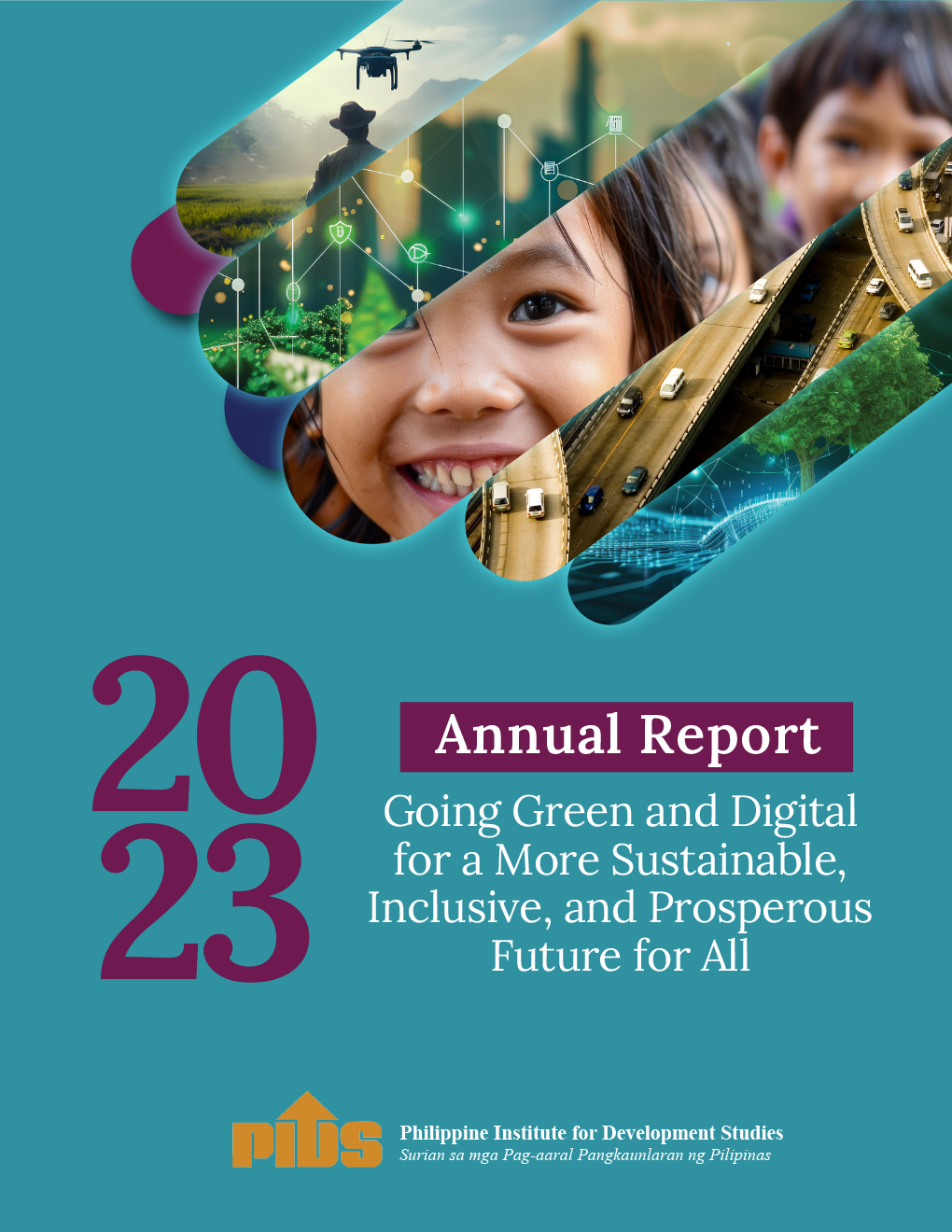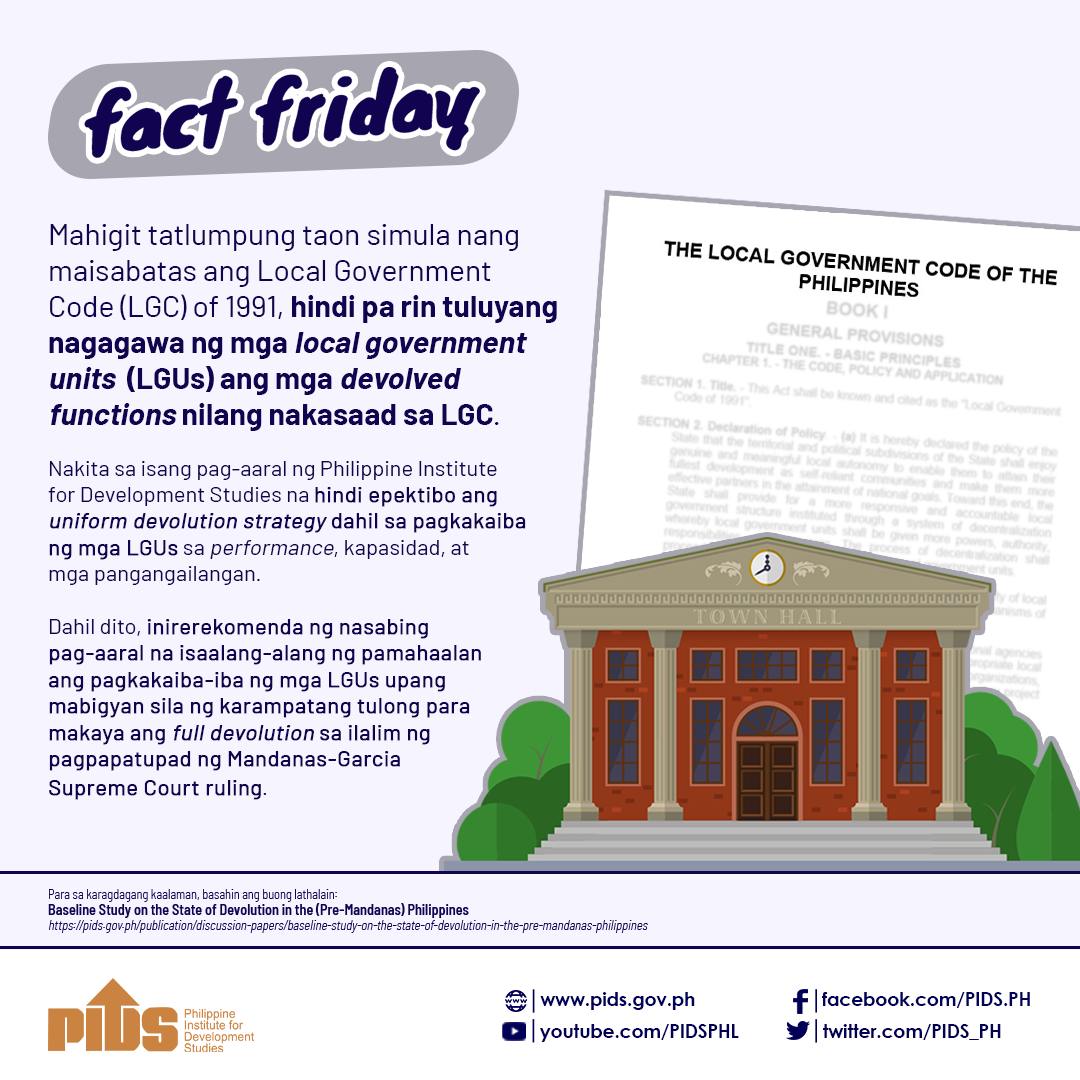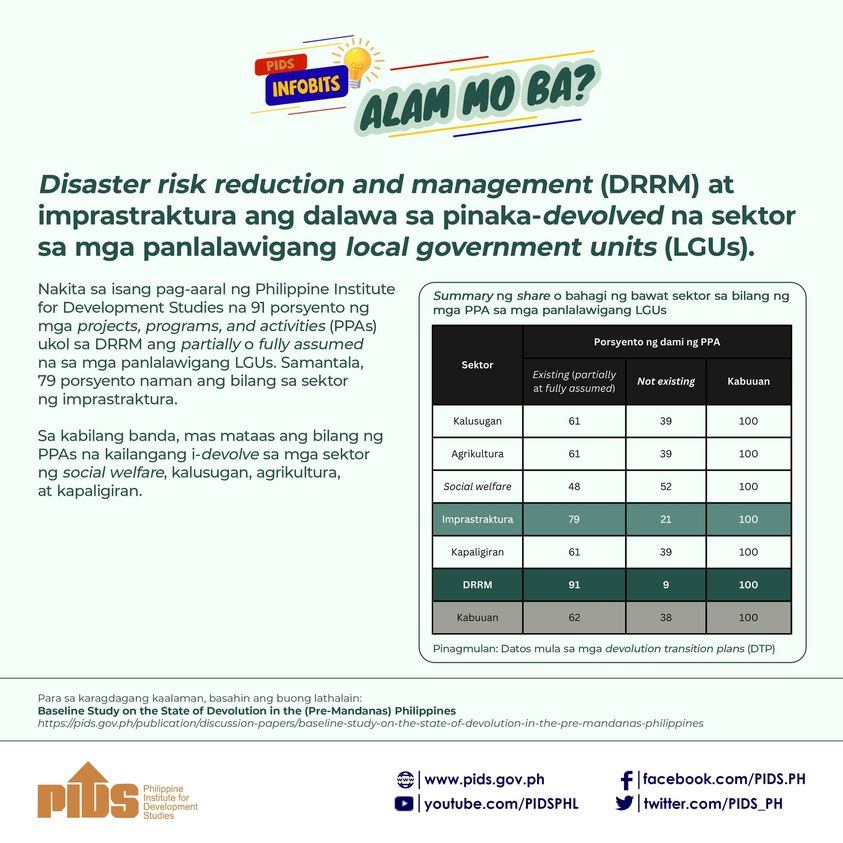Local government units (LGUs) can use their assets to generate additional revenues for various public services, according to a study released by the Philippine Institute for Development Studies (PIDS).
This was part of the recommendations of a baseline study on policy and governance gaps for the “Local Government Support Fund Assistance to Municipalities,” or LGSF-AM, program.
The team, led by Pids Research Fellow Charlotte Justine Diokno-Sicat, said managing local assets can increase LGU revenues without increasing taxes.
“The main source of tax revenues of Philippine LGUs is real property and business taxes while non-tax revenues are from economic enterprises and user fees. LGU assets can contribute to non-tax collections if properly managed,” the
authors said.
The researchers said LGUs only considered asset management as an accounting, bookkeeping and recording function. However, asset management can include using assets as leverage against private sector financing, they wrote.
The study stated that improved asset management would increase the ability of LGUs to finance its projects.
Based on the data, only a few LGUs (about 16.39 percent) explored and took advantage of securing funds through public-private partnerships.
However, more than half (51.31 percent) of the LGUs said they established local public enterprises as a source of additional funds to finance their “Programs, Projects and Activities” (PPAs) between 2012 and 2017.
“LGUs in the Philippines have been empowered with asset management functions by virtue of the LGC with accounting and auditing guidelines issued by the Commission on Audit,” the study said.
The researchers found that out of the 1,248 municipalities that submitted data on asset management for 2017, only 92.6 percent had entries.
Nearly half (42 percent) of these municipalities said the largest amount of income from Income Generating Enterprises (IGEs) reached nearly P3.5 billion. However, the type of IGE was not specified, the researchers said.
Other top sources of IGEs are public markets, which accounted for 23 percent or about P1.9 billion.
This was followed by water utilities at 10.4 percent; multiple economic enterprise, 4.5 percent; and, cultural or sports or recreational center, 3.6 percent. Regions with the highest assets, based on municipalities, are: Regions 4-A (Cavite, Laguna, Batangas, Rizal and Quezon); Region 3 (Central Luzon); and, Region 1 (Ilocos).
For 2016, Metro Manila had the lowest total value of assets because there is only one municipality in the region, which is Pateros.
This was part of the recommendations of a baseline study on policy and governance gaps for the “Local Government Support Fund Assistance to Municipalities,” or LGSF-AM, program.
The team, led by Pids Research Fellow Charlotte Justine Diokno-Sicat, said managing local assets can increase LGU revenues without increasing taxes.
“The main source of tax revenues of Philippine LGUs is real property and business taxes while non-tax revenues are from economic enterprises and user fees. LGU assets can contribute to non-tax collections if properly managed,” the
authors said.
The researchers said LGUs only considered asset management as an accounting, bookkeeping and recording function. However, asset management can include using assets as leverage against private sector financing, they wrote.
The study stated that improved asset management would increase the ability of LGUs to finance its projects.
Based on the data, only a few LGUs (about 16.39 percent) explored and took advantage of securing funds through public-private partnerships.
However, more than half (51.31 percent) of the LGUs said they established local public enterprises as a source of additional funds to finance their “Programs, Projects and Activities” (PPAs) between 2012 and 2017.
“LGUs in the Philippines have been empowered with asset management functions by virtue of the LGC with accounting and auditing guidelines issued by the Commission on Audit,” the study said.
The researchers found that out of the 1,248 municipalities that submitted data on asset management for 2017, only 92.6 percent had entries.
Nearly half (42 percent) of these municipalities said the largest amount of income from Income Generating Enterprises (IGEs) reached nearly P3.5 billion. However, the type of IGE was not specified, the researchers said.
Other top sources of IGEs are public markets, which accounted for 23 percent or about P1.9 billion.
This was followed by water utilities at 10.4 percent; multiple economic enterprise, 4.5 percent; and, cultural or sports or recreational center, 3.6 percent. Regions with the highest assets, based on municipalities, are: Regions 4-A (Cavite, Laguna, Batangas, Rizal and Quezon); Region 3 (Central Luzon); and, Region 1 (Ilocos).
For 2016, Metro Manila had the lowest total value of assets because there is only one municipality in the region, which is Pateros.












